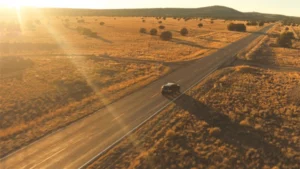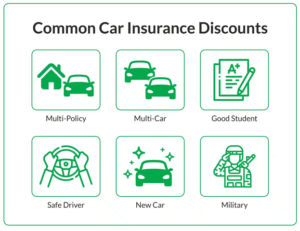What kind of insurance do I need to drive in Arizona?

Nowadays, it’s a very common question: What kind of insurance do I need to drive in Arizona? Today we will discuss car insurance coverage in Arizona. Types of Arizona’s auto insurance coverage, Arizona’s car insurance cost, Auto insurance claim process and ways to reduce auto insurance costs in Arizona In Arizona, third-party liability coverage is the most basic kind of auto insurance, and it is required. It shields you from having to pay for any damages to someone else’s property as the policyholder. In the event that you cause an accident that results in someone being hurt or killed, you will also be covered.
Who is covered by your auto insurance policy?
In the event of an auto accident, your insurance might pay for:
- The chauffeur
- Every traveler
- More parties engaged in the collision.
- Injured passengers or other accident participants may need to file a claim with their own insurance first in certain provinces.
You need to include the names of any other drivers on your insurance coverage. Other drivers in your family who might use your vehicle are considered additional drivers. For instance, to take a car to work or school In the event that they have a bad driving history, your premiums can go up.
Types of Arizona’s auto insurance coverage

- Liability Coverage: This coverage is mandatory across Canada and covers bodily injury or property damage that you may cause to others in an at-fault accident.
- Accident Benefits: Also mandatory, this coverage provides benefits for medical expenses, rehabilitation, funeral expenses, and lost income for you and your passengers, regardless of fault.
- Uninsured Motorist Coverage: This coverage protects you if you’re in an accident with an uninsured or underinsured driver who is at fault.
- Direct Compensation – Property Damage (DCPD): This coverage pays for damage to your vehicle and its contents when another driver is at fault.
- Collision Coverage: Optional coverage that pays for the repair or replacement of your vehicle in the event of a collision, regardless of fault.
- Comprehensive Coverage: Optional coverage that protects against non-collision events such as theft, vandalism, or natural disasters
- Specified Perils: Similar to comprehensive coverage, it protects against specific perils that you choose, such as fire or lightning.
- All Perils: A combination of collision and comprehensive coverage, providing a broader range of protection for your vehicle.
- Endorsements: Additional coverage options that can be added to your policy, such as coverage for rental cars, roadside assistance, or increased liability limits.
It’s crucial to remember that Montana’s provinces and territories may have different requirements for auto insurance, so it’s best to get precise information by contacting your local insurance provider or regulator.
Arizona’s car insurance cost?

In Arizona, auto insurance is usually reasonably priced. Arizona has annual average car insurance premiums of $1,247, which is 12.6% cheaper than the national average.
There are more factors than just where you live that affect your car insurance rates. A lot of factors are considered when determining car insurance rates, including the insured party’s age, gender, driving record, and credit score.
Arizona’s Average Auto Insurance Rates by Age
It’s a given that your rates for auto insurance will change as you age. Teenage drivers typically pay more for auto insurance because insurers view them as riskier drivers. In Arizona, a 16-year-old driver’s auto insurance costs $6,279 a year, while a 50- to 59-year-old driver’s insurance costs $1,025 a year.
ARIZONA CAR INSURANCE RATES BY AGE
| Age | Average Yearly Premium |
| 16 | $6,278.78 |
| 17 | $5,672.25 |
| 18 | $4,938.33 |
| 19 | $2,919.05 |
| 20s | $1,579.72 |
| 30s | $1,160.93 |
| 40s | $1,109.32 |
| 50s | $1,025.45 |
| 60s | $1,076.14 |
| 70s | $1,374.51 |
Arizona ranks as the 26th most affordable state for 16-year-old drivers to purchase auto insurance if you’re looking for coverage for a young driver.
Arizona’s Average Auto Insurance Costs by Gender
Insurance firms utilize a driver’s gender as a pricing consideration, even though it doesn’t have as much of an impact on prices as a driver’s age or location.
Arizona’s Average Auto Insurance Costs by Gender
| Gender | Average Yearly Cost |
| Male | $1,180.42 |
| Female | $1,182.56 |
Comparing quotes is the best course of action if you’re concerned about receiving the best value from your current auto insurance provider.
Arizona’s Average Auto Insurance Rates by Marital Status
A benefit of becoming married is that you can receive a better bargain on auto insurance in addition to the wedding presents. Married drivers in Arizona save $91 a year on their auto insurance premiums. Compared to the national average of $76 this is a better deal.
ARIZONA CAR INSURANCE PREMIUMS BY MARITAL STATUS
| Marital Status | Average Annual Rate |
| Single | $1,180.42 |
| Married | $1,089.35 |
| Divorced | $1,180.42 |
| Widowed | $1,157.80 |
In the country, Arizona has the 35th most costly auto insurance for divorced drivers. Do not hesitate to compare quotes if you believe your insurance is overpriced. You never know what deals you might come across!
Arizona’s Average Auto Insurance Costs by Credit Score
Credit is used by auto insurance firms to forecast a potential customer’s reliability. Data trends show that drivers with high credit scores are typically more dependable vehicle insurance clients since they make claims less frequently, which results in lower premiums from insurance providers.
In Arizona, a driver with perfect credit can save $1,419.36 annually on vehicle insurance premiums, as opposed to a driver with poor credit. Find out more about how credit history influences the cost of auto insurance.
ARIZONA AUTO INSURANCE EXPENDITURES BY CREDIT TIER
| Credit Tier | Average Annual Premium |
| Very Poor (300-579) | $2,443.66 |
| Fair (580-669) | $1,915.90 |
| Good (670-739) | $1,529.22 |
| Very Good (740-799) | $1,238.79 |
| Exceptional (800-850) | $1,024.30 |
It might be challenging to find cheap auto insurance when your credit score is poor. But we are here to offer some assistance. See how much you may save by reading our article on obtaining auto insurance with bad credit!
Average Arizona Auto Insurance Rates for Unsafe Drivers
Your auto insurance rates will increase if you are determined to be at fault in an accident or if you are found guilty of a moving infraction. Your auto insurance will cost more the more red flags you accrue.
In Arizona, the annual premium penalty for your first small at-fault occurrence is $628.55 for your auto insurance. A DUI, one of the most serious driving offenses, can increase your annual insurance costs in Arizona by an average of $815.50.
ARIZONA AUTO INSURANCE COSTS AFTER VIOLATIONS
| Age | Average Yearly Rate |
| DWI/DUI | $2,062.57 |
| Reckless Driving | $2,756.46 |
| At-Fault Accident (<$1,000) | $1,875.62 |
| At-Fault Accident ($1,000-$2,000) | $2,146.11 |
| At-Fault Accident (>$2,000) | $1,875.62 |
| Open Container | $1,967.76 |
| Speeding (21-25 MPH > limit) | $1,810.51 |
| Speeding (16-20 MPH > limit) | $1,810.51 |
It’s worthwhile to obtain estimates in order to locate an affordable insurance plan that meets your needs if your vehicle insurance premiums are higher than normal.
Average Arizona Auto Insurance Prices by Coverage
The choice of coverage tier will determine the monthly cost of your auto insurance. The cost of a liability-only policy is typically lower than that of a low-deductible comprehensive policy. Liability-only insurance and comprehensive coverage with a $500 deductible cost $602 more in Arizona.
ARIZONA CAR INSURANCE RATES BY COVERAGE LEVEL
| Coverage Level | Average Annual Premium |
| $100K/$300K/$100K Bodily Injury/Property Damage — Liability Only | $761 |
| $100K/$300K/$100K Bodily Injury/Property Damage: $1,000 Comprehensive/Collision | $1,233 |
| $100K/$300K/$100K Bodily Injury/Property Damage: $500 Comprehensive/Collision | $1,359 |
| $50K/$100K/$50K Bodily Injury/Property Damage — Liability Only | $660 |
| $50K/$100K/$50K Bodily Injury/Property Damage: $1,000 Comprehensive/Collision | $1,136 |
| $50K/$100K/$50K Bodily Injury/Property Damage: $500 Comprehensive/Collision | $1,263 |
| State Minimum — Liability Only | $513 |
| State Minimum: $1,000 Comprehensive/Collision | $988 |
| State Minimum: $500 Comprehensive/Collision | $1,115 |
Weighing rates can help you find affordable insurance that meets your demands if you’re searching for a better bargain on auto insurance.
Does Every State’s Rate of Auto Insurance Change Based on Gender?
The gender indicated on your driver’s license may not be taken into account by insurers in all states when setting your auto insurance rate. The following states prohibit an individual’s gender from influencing their insurance rate:
- California
- Hawaii
- Massachusetts
- Michigan
- North Carolina
- Pennsylvania
Ways to Reduce Auto Insurance Costs in Arizona

- Compare Quotes: Obtain quotes from multiple insurance providers. Each company uses its own formula to determine rates, so prices can vary significantly.
- Bundle Policies: Consider bundling your auto insurance with other policies, such as homeowners or renters insurance, to potentially qualify for a discount.
- Increased Deductibles: A higher deductible usually leads to lower premiums. Just be sure you can comfortably afford the deductible in case of a claim.
- Maintain a Good Driving Record: Safe driving can contribute to lower premiums. Avoid accidents and traffic violations to keep your rates down.
- Ask About Discounts: Inquire about discounts for safe driving, good grades (if applicable), and other factors that may apply to you.
- Drive a Safe and Affordable Car: The type of car you drive can impact insurance costs. Generally, safer and less expensive cars have lower insurance premiums.
- Consider Your Coverage Needs: While looking for affordability, ensure that the coverage meets your needs. Full coverage typically includes liability, comprehensive, and collision coverage.
Don’t forget to customize your insurance to meet your unique needs and circumstances. Reviewing your policy on a regular basis and comparing quotes will help you make sure you’re getting the greatest value.
Auto insurance claim process
Report the Incident: The first thing you should do after an accident or damage is to notify your insurance provider. Usually, you can accomplish this by calling the insurer’s claims hotline, utilizing a mobile app, or going online. Give specifics like the incident’s description, date, time, and location.
Information Exchange: Share details with the people involved, such as names, contact information, insurance information, and car data. Get the details of any witnesses, if there are any. Document the scene with photos, if possible, to provide visual evidence.
File a Police Report: It is wise to make a police report in certain situations, particularly if there are injuries or substantial damage. When processing the insurance claim and assigning blame, this document may be very important.
Claim Adjuster Assessment: The insurance company assigns a claims adjuster to your case. The adjuster will investigate the incident, review the police report, inspect the damages, and assess the costs involved. They may also interview involved parties and witnesses.
Estimate and Repair: The insurance company evaluates the adjuster’s findings to determine whether to declare the car a total loss or to issue an estimate for repairs. The repairs will start if the estimate is approved. While some insurers let you select the repair shop, others have preferred shops.
Medical Claims: In the event that injuries occur, the medical claims procedure starts. This entails providing the insurance company with medical bills, records, and other pertinent paperwork. The kind of insurance and state laws will determine what is and is not covered for medical costs.
Resolution and Payment: The insurance provider will make a payout after the evaluation and repair procedures are finished. This can entail paying for repairs, paying for a totaled car, or paying for medical bills. The resolution process may take several weeks.
Appeals Process: If you disagree with the insurance company’s decision, there’s usually an appeals process. This may involve providing additional documentation or appealing to a higher authority within the insurance company.
The procedure for filing a car insurance claim is intended to assist people in getting over mishaps or unforeseen circumstances. Throughout the whole claims process, it is imperative that you adhere to the procedure exactly, give accurate information, and communicate with your insurance carrier in a clear and concise manner.
Some advice for accelerating your auto insurance claim
Here are some pointers to speed up the process of filing a claim on your auto insurance.
Download the mobile app for your insurance: Through their applications, a lot of auto insurance companies let drivers submit claims. While each company’s app may have different features and usability, many allow you to attach files such as written statements, images, and supporting evidence to support your claim. Certain applications facilitate the tracking of your claim’s progress.
Compile the required data prior to submitting the claim: When making a car insurance claim, the more organized you are, the faster you will find the information you need. Delays may result from omitting important information, missing uploading accident images, or not mentioning the other driver’s insurance.
Remember when things are due: The type of auto insurance claim, the insurer, and the location all affect the filing deadlines. As soon as you can after an accident, get in touch with your motor insurance provider to find out if there are any deadlines for submitting paperwork and submitting a claim. To ensure that you don’t forget the deadline, add these to your paper or digital calendar and, if at all possible, attach an alert.
Contact your auto insurance provider again. The severity of the collision, whether more than one motorist was involved, and the amount of time it takes the adjuster to go through all the paperwork can all affect how quickly a claim is settled. It’s easier to make sure everything is on track for settlement if you follow up with your insurance.
Common Myths and Misconceptions About Car Insurance
A lot of myths and misconceptions surround the subject of auto insurance. These false beliefs have the potential to cause confusion and, occasionally, to cause people to make poor decisions for themselves. Let’s dispel some of these widespread rumors and clear up any misunderstandings regarding auto insurance.
1. Myth: Red cars cost more to insure: The idea that red automobiles cost extra to insure is one that is frequently spread. The truth is that your car’s color has no bearing on your insurance costs. A driver’s history and vehicle make, model, and year are of greater interest to insurers.
2. Myth: Minimum Coverage is Always Sufficient: Some people think it’s always sufficient to choose the bare minimum of coverage. However, in the event of a serious accident, basic coverage might not provide you with enough protection. In order to improve your financial security, it’s critical to evaluate your unique demands and take into account supplemental coverage.
3. Myth: Your Insurance Covers Everything: Although insurance offers necessary protection, it does not cover every eventuality. It’s important to know the restrictions of your policy. Generally speaking, things like normal wear and tear, mechanical malfunctions, or deliberate destruction are not covered.
4. Myth: Personal Auto Insurance Covers Business Use: A personal auto insurance coverage may not protect you if you use your car for work-related travels. Commercial auto insurance is frequently necessary for business use in order to guarantee adequate coverage in the event of work-related accidents.
5. Myth: Older Drivers Always Pay More: Many insurance companies give senior citizens discounts, despite the common misconception that older drivers always pay higher prices. Older drivers can frequently receive reduced rates due to their experience and safe driving records.
Clarifying Misconceptions:
1. Misconception: Speeding Tickets Don’t Affect Rates Significantly: Some people believe that a single speeding ticket won’t have a big effect on insurance costs. In actuality, fines for speeding can result in higher insurance rates, and more expensive rates may follow subsequent infractions. To keep insurance costs low, driving safely must be your top priority.
2. Misconception: Credit Score Doesn’t Affect Auto Insurance: It is true that your credit score affects how much your auto insurance costs. Credit history is a common tool used by insurers to evaluate a policyholder’s dependability. Better credit makes one more trustworthy and might result in lower insurance costs.
3. Misconception: Comprehensive Coverage Covers Everything: Even though comprehensive coverage is broad, it doesn’t address every eventuality that could arise. It is essential to comprehend the precise contents and exclusions of your policy. For instance, it usually doesn’t cover routine upkeep or mechanical failures.
It’s critical to bust these myths and clear up misunderstandings in order to make knowledgeable judgments about auto insurance. Policyholders can ensure they have the appropriate protection for their needs and can navigate the market more skillfully by being aware of the reality of insurance coverage.
I believe if you can observe my entire blog, you may get a valid idea of car insurance coverage in Arizona. Types of Arizona’s auto insurance coverage, Arizona’s car insurance cost, Auto insurance claim process and ways to reduce auto insurance costs in Arizona
